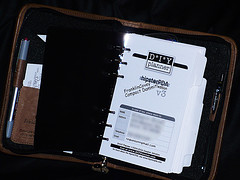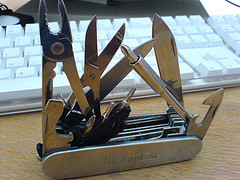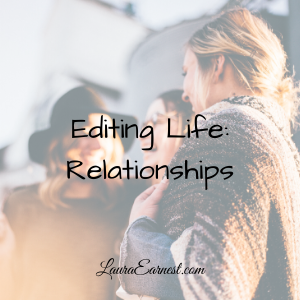
How To Set Up Your DIY Planner
Mondays are productivity days at SimpleProductivity blog.

One of the advantages of making a DIY planner is that you can customize exactly what goes into it. Anything you need, in…anything you don’t, out.
Today we will look at some useful sections to help you set up your DIY Planner.
What Is The Purpose?
I want to point out that in its loosest definition, a planner is just for that…planning. Whether or not you work out of the same pages during your daily tasks is another matter. For this discussion, we are going to focus on the planner as being for planning only.
Daily Pages
The first thing you need to have in a planner is some way to show you how your day is going to unfold. You may not work from this, but you need space to plan the day.
What does daily planning consist of? Your scheduled appointments (calendar) along with the things you need to accomplish that day (tasks). You will need some sort of space to list out these, and to check to make sure that there are enough hours in the day to accomplish what is in your plan.
Most standard planning pages include this information, either in a one- or two-page per day format.
Goals/Targets
One of the challenges of productivity is not to meander aimlessly between projects that happen to catch your eye.
By having a goals or targets section, you can see what you are aiming for. Used during planning, this section will have a list of things you want to accomplish over the next month or week.
Projects
Next up is the stuff you are actually working on. This may be things that relate to your goals, or it may be things that need to be completed. For example: “Get gutters cleaned” might not be on your target list, but you probably don’t want to ignore it too long.
To Divide or Not
With that you have all the stuff to do your current planning.
What about dividing it out? This would mean grouping planning items for specific areas of your life together.
I think this depends on how much you have to get through, and how much you are called on to access things.
For example, I have a section in my planner that is about Girl Scouts. As I move through the phases of planning each outing, I have to keep track of various approvals. As these come in, I want to note them on the project page, but I don’t want to have to search through everything. So my section for Girl Scouts contains the calendar for the meetings, project pages for each outing, and project pages for other things we are doing.
What About Other Stuff?
And now some of you are asking about other stuff that is generally included in planners. What about an address book, for instance?
I don’t find that I use an address book for planning what I am doing during a given day or week. Therefore, I leave it in my phone, and I can access it there for the rare times I need a phone number for planning.
If you use something for planning regularly, it should be included in your planner. Having everything in one place makes it easy to plan.
This article should have given you a good foundation for figuring out what sections you need in your own planner. What did you learn? What do you do differently? Share below.
Photo by NapInterrupted. Licensed under Creative Commons.




